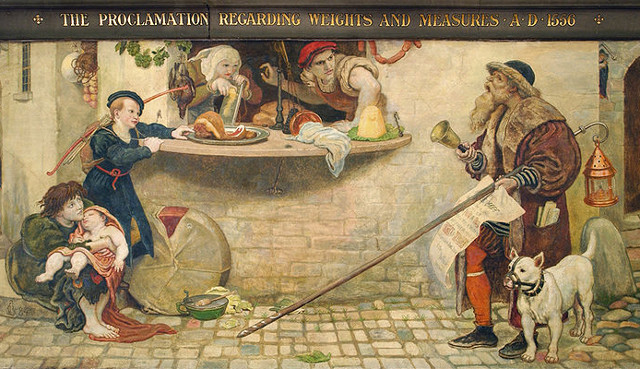MyCHIPs Digital Money

Defining Time Based Money
Let us start by explaining what a CHIP is. It stands for Credit Hour In Pool, to help us remember that money is credit, or debt. And it can be pooled together in an effectively fungible (transmutable) way so we can trade value with anyone else. If you think the acronym is too painful, you can just use it because it sounds cool.
As mentioned elsewhere, a unit of value based on time is not the easiest standard to define. Other simpler standards, like an ounce of gold, are easier to understand and to quantify. If you can just refine gold to a consistent standard, every coin of a specified weight and purity should be just like every other.
The CHIP was chosen not because it is easy, but because it has other, more important benefits. An hour of one person’s work is clearly not just like every other hour of work. We will need to be much more specific to obtain a useful standard.
This is the CHIP definition:
- Credit for the value produced by one continuously applied hour of adult human work;
- in such circumstance where there is neither a shortage nor a surplus of such willing labor available; and
- where the job can be reasonably understood with only minimal training and orientation; and
- without considering the added productivity due to the use of labor-saving capital equipment; and
- where the person performing the work has a normal, or average, functioning mind and body; and
- can communicate effectively as needed with others in his/her work; and
- can read and write effectively as needed with others in his/her work; and
- understands, and can effectively employ basic arithmetic and counting; and
- otherwise, possesses no unusual strengths, weaknesses, developed skills, talents or abilities relevant to the work.
This may sound complicated, but it is really pretty simple. The economic law of one price tells us that, absent market frictions, the price for a given commodity should converge to a single value. The CHIP definition is meant to express how an hour of nominal, unskilled labor might be valued in a hypothetical worldwide, free, and balanced market where there are no borders, tariffs, or other distortions.
Thankfully, a standard doesn’t have to be absolutely precise to be useful. Look at the US dollar! Since 1971, it has had absolutely no definition at all and has still maintained some degree of stability.
The CHIP enjoys greater stability because it is backed by real goods and services. And the formal definition provides an all-important tether to keep the valuation from drifting off irrationally over time (like the Dollar).
Practical Use
One possible example of a one CHIP/hour job is stacking boxes of goods in a warehouse. The job can be done without the need of tools or equipment. It is pretty easy to learn and understand. And most any adult without a physical impairment can do it.
We all recognize, a person digging a hole with a shovel is a lot more productive than someone using a spoon. The standard definition is meant to account for that too. In other words, it may be the job of the employer to fund the equipment necessary to do the job at the desired efficiency level. The capital represented by the shovel can receive its own reward from the resulting increase in productivity. In this example, a person digging with a spoon might receive the same one CHIP/hour as the person using the shovel, as long as it is up to the employer to determine which tool is best for the job.
On the other hand, a person who operates heavy equipment to dig the hole might require months or years of training in order to do it safely and effectively. That training itself is a form of capital investment and so can also command a reward. So people with these kinds of developed skills would be likely to earn more than one CHIP/hour.
Exactly how much more, will be a function of market forces. If machine-powered excavation is in great demand, it is likely to command much higher pay than in an economy where it is not.
Also, a mechanical excavator machine represents a much greater capital investment than a mere shovel. That investment may also demand a return to the equity that owns it. But while this affects the price charged to the customer, in itself, it does not change the rationale for compensation to the operator.
If you’re still confused, you might be thinking: OK, but what is a CHIP really worth? Maybe you mean in terms of “real money,” meaning Dollars or Euros.
If so, you’re probably still not getting it.
A CHIP is, by definition, worth what an unskilled person can produce in an hour.
It is purposely not linked to any existing, and particularly floating, currencies.
You could expect the market exchange rate between CHIPs and dollars to be something close to the minimum wage. This doesn’t necessarily mean a minimum wage mandated by government but rather, the effective minimum wage employers must pay in order to adequately staff unskilled labor positions. Accounting for all costs and benefits, this might currently (2022) be thought of as being roughly 10 USD per CHIP.
Author’s note: The $10/CHIP estimate above was made considering only economic factors in the US. A project for computing a more objective and worldwide comparison to existing currencies and commodities has been proposed here. Various results have been published here and anyone can contribute additional reasearch to help refine the model.
Over time, central bank currencies are expected to continue to lose value. But the basic CHIP definition stays the same. So the exchange rate will gradually move upward to track with the ever-decreasing value of traditional money.
Finally, we should understand the difference between CHIPs and MyCHIPs. As mentioned, a CHIP is just a proposed unit of measure for time-based credit money. MyCHIPs is a specific proposal for a digital interchange protocol for facilitating the trading of CHIPs over the Internet.
MyCHIPs allows people to maintain a CHIP account on a networked computer, or on a server of a hosting provider. Users can exchange credits for products and services, much like we use credit cards today. The system even has the potential to handle much larger and longer term credit facilities, such as corporate debt, industrial bonds, and home mortgages.
